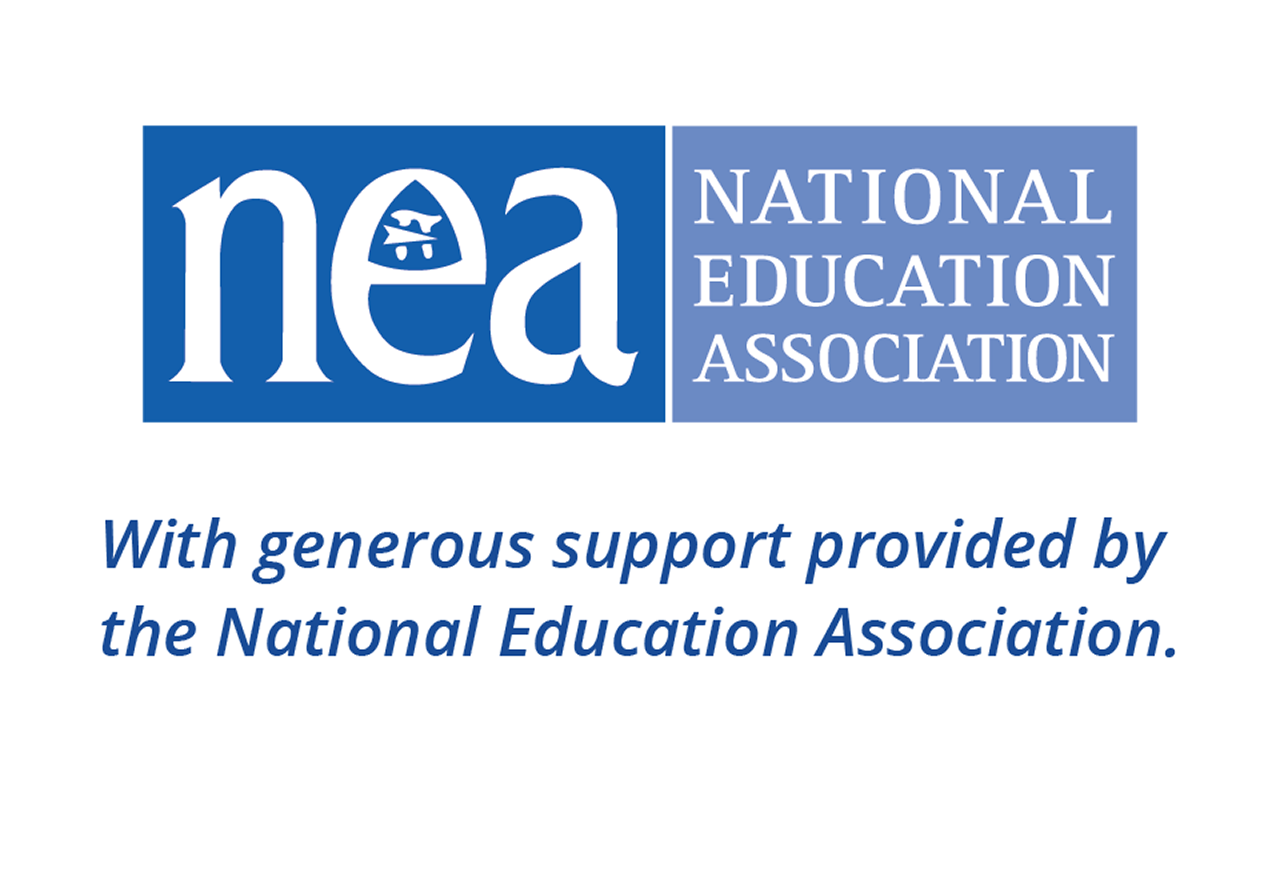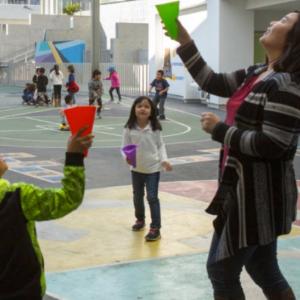I have seen the teachers and leaders I support be extra compassionate, extra supportive and extra available.
– Educator response to a Colorín Colorado survey on supporting immigrant students
Overview
For many immigrant students, immigration issues may affect their social-emotional health. Other students may be aware that the issues are affecting classmates or may wish to discuss their opinions around these issues. Here are a number of age-appropriate strategies schools and individual teachers can use to help address those challenges in the classroom and beyond.
We also recommend the strategies found in Supporting Newcomers' Social-Emotional Needs from the U.S. Department of Education Newcomer Toolkit, as well as our section on addressing immigrant students' anxiety, trauma, and depression.
Conversations about immigration
You can prepare for conversations about immigration (whether planned or unplanned) with the tips shared in our article about navigating tough topics in the classroom, which include specific tips about immigration.
Create a welcoming climate in your classroom
Why this matters
A welcoming environment can promote respect and confidence among the classroom community, laying a foundation for strong relationships with peers and educators.
Tips for getting started
- Communicate regularly that all students are valued members of the class.
- Create a list of guidelines for respectful classroom discussion with students.
- Reiterate that disrespectful speech/behavior and bullying will not be tolerated.
- Remind the class that hurtful comments or actions based on aspects of identity, including immigration, are not acceptable.
Note: Read more about tips for protecting ELLs and immigrant students from bullying in this article from Language Lizard.
Help students maintain their routine
Download tip sheet:
Why this matters
Having a safe and familiar place to go can make a huge difference for students who are experiencing uncertainty, trauma, or stress; maintaining a routine can offer some stability during difficult times.
One respondent to our survey on how schools are supporting immigrant students writes, "For kids as young as the ones I teach, keeping the routine going is vital, as well as reassuring them that we love them and want them here in school with us."
Tips for getting started
- Remind staff members of the importance of helping kids maintain their routines.
- Try to avoid extra disruptions to the extent possible.
- Encourage teachers to look at their daily routines and adjust as needed if students need additional or different kinds of outlets.
Reviewing students' schedules
You may also wish to look at students' schedules and look for ways to reduce the number of disruptions and transitions where possible. ELL administrator Kristina Robertson writes,
Think about what kinds of supports are available in the school environment if students have had very little school experience or if they've experienced trauma. These students may benefit from a lot of structure and attention from the same small group of people on a regular basis and a regular schedule.
For elementary students, this may mean reducing the number of transitions and classroom switches throughout the day, which can be overwhelming — this is a particular challenge for ELLs who are struggling and being pulled out for multiple kinds of services and support. For secondary students, consider connecting students with adult mentors that can provide a check-in each day, as well as a place to take a break when needed.
Let students know that they can talk to you
Why this matters
Sometimes what students need most is for someone to listen. ELL administrator Kristina Robertson notes that this is a particularly important role educators can play since many immigrant students are aware of their parents' already high levels of stress and don't wish to worry them further. She writes, "Many immigrant students I've worked with have said, 'I don't want to say anything to my mom because she is already so worried.'" Educators and staff alike can play this role — bus drivers, cafeteria staff, or the school nurse can have a positive impact by taking a few minutes to check in with a child.
In our webinar with UCLA researchers about the impact of immigration policy on schools (2018), Dr. Patricia Gándara also encourages teachers to continue to "share with students a deep sense of caring and a real relationship."
Tips for getting started
Without singling students out, look for ways to check in and find one-on-one time at lunch, during group work, before or after school, or during another activity or class. Consider whether having some small group conversations might also be helpful.
In these conversations:
- Be mindful of protecting student privacy.
- Respect the confidentiality of what students share, and make sure that other staff members understand this guideline as well.
- Let students know they can talk to you at any time.
- Be as honest as possible and acknowledge the uncertainty of the moment, as well as the difficulty of the challenges students are facing.
- Avoid platitudes such as, "I'm sure it will be fine," or "Everything will work out." Instead, try, "That sounds really hard. You can talk to me when you need to."
- Determine whether students have someone they can talk to in their own language and help make those connections if needed.
In addition:
- Connect students with additional support if needed.
- Learn more about the challenges that immigrant students may be experiencing for important background on this topic, as well as ideas for supporting young children.
Ideas from educators
Many educators who participated in our related survey shared specific steps they had taken to reach out to students by:
- letting students know that teachers could be trusted and would listen to their concerns
- trying to be as honest as possible with students and families, and acknowledge the uncertainty of the moment
- making an effort to check in with students.
Recommended resources
- California Schools Help Unaccompanied Immigrant Students Combat Trauma, Language Barriers (EdSource)
Recommended videos 
When students share immigration concerns from home: Anne Marie Foerster Luu, ESOL Specialist, MD
Pay attention to what students share
Why this matters
Immigrant students, including young children, regularly navigate decisions about what to say in conversations about immigration or related topics throughout the school day. There is now more research focusing on this topic, including on the significance of students' silence with respect to immigration issues and status.
Tips for getting started
- Pay attention to what your students choose to share.
- In addition, pay attention to the questions students choose not to answer or activities in which they don't seem comfortable.
- Consider if activities you are planning may put students on the spot or inadvertently highlight immigration status or experiences.
- Keep in mind that your students bring a wide range of experiences and types of knowledge on a variety of topics. The better you get to know them, the more familiar you will be with these personal perspectives.
- Remember to never put students on the spot to share their experience directly or refer to a student's immigration status with others.
Case study: Why Lupe stayed seated
In her research based on extensive classroom observations at an elementary school in Brooklyn, Dr. Ariana Mangual Figueroa (2017) observed a variety of classroom activities at the school; one situation she highlights took place in a social-emotional learning class about bullying. In an effort to increase understanding about students' diversity, the teacher had planned an activity in which students would stand when their country of origin was called.
However, she had not taken into account that some of the students were not born in the U.S.; after some initial confusion, she asked everyone "not born here" to stand. Dr. Mangual Figueroa noted that an undocumented student in the class, Lupe, remained seated through the exercise and mumbled that she wouldn't stand up. Dr. Mangual Figueroa writes,
The way this exercise — intended to foster inclusion — in fact alienated certain students is revealing. Educators may assume that students will feel comfortable talking about their identity during activities meant to elicit multicultural perspectives designed to honor their culture and experiences in school. By creating a situation in which students would have to publically identify with a home country that might then raise questions about nationality and citizenship, (the teacher) inadvertently turned the activity from one of celebrating diversity into one that generated student fear of revealing their differences in legal status.
This does not suggest that activities celebrating students' cultures are out of place. Instead, it may be worth it to examine the activities, determine whether they might put students on the spot, and try reframing them. Dr. Mangual Figueroa encourages teachers to:
- allow students to choose topics of interest without putting them in a position where they have to describe their own experiences or disclose immigration/citizenship status
- pay attention to students' silence by tuning in to both "'audible' silences that stop classroom conversation as well as those 'inaudible silences that indicate a strategic refusal to participate'" (p. 516).
A decision to "shatter the silence"
For a personal take on living in the shadows as undocumented students, read this interview with twin sisters Brizzia and Maria Muñoz Robles, who are both students at Notre Dame. They were the first twin valedictorians of their high school and are DACA recipients who talk about what it was like to hide their undocumented status throughout all of their schooling, until a conversation with the former president of Notre Dame gave them the courage to share their story.
Recommended videos 
Helping DREAMers tell their stories
Provide ideas for managing stress
Why this matters
Students can benefit from learning about (and practicing) different ideas for expressing their emotions and addressing stress, especially if they are feeling high levels of stress at home.
Tips for getting started
Consider sharing the following activities that educators have recommended. You may also wish to invite a school counselor to lead a class discussion and share strategies such as:
- Asking students how they deal with stress
- Drawing "what this means to me"
- Writing journal entries
- Creating comic books (See related video from NPR)
- Brainstorming ways that students do/can help each other from teacher Rosa Villalpando
- Activities to deal with stress such as breathing exercises, meditation, the arts, and sports
- Providing opportunities for students to share their stories (see our related article)
- Talking with trusted friends or adults
One teacher who responded to our survey wrote,
Having students keep journals can be effective. The journals are used for processing their learning, but at times, utilizing the journal to share their concerns and feelings. The journal can be kept between the student and the teacher or students may elect to share their journals with classmates. Teacher comments and feedback are a very important aspect of the journals. This is a safe way for students to express their thoughts and for teachers to identify student needs.
The UCLA team shares the experience of an art teacher from Texas: "As an art teacher, I saw many students who drew and colored images of their parents and themselves being separated, or about people stalking/hunting their family" (Gándara & Ee, 2018a, p. 9).
Note: Activities such as sitting with eyes closed may be triggers for students who have experienced trauma. For ideas on how to use mindfulness in trauma-based teaching, as well as what to avoid, take a look at Why Mindfulness And Trauma-Informed Teaching Don't Always Go Together from KQED.
Recommended resources
- How Do We Support Newcomers’ Social-Emotional Needs? (U.S. Department of Education Newcomer Toolkit)
- How Teachers Can Help Immigrant Kids Feel Safe (Greater Good Magazine, UC Berkeley)
- 8 Fun Breathing Exercises for Kids (Childhood 101)
- How to Teach Your Child Calm Breathing (Anxiety Canada)
- Calming Anxiety in Children (Coping Skills for Kids)
- The Inner World of the Immigrant Child by Cristina Igoa
Incorporate SEL into your classroom routines
Why This Matters
Building social and emotional learning (SEL) skills into the classroom can improve students' ability to regulate emotions, form healthy relationships, manage stress, and contribute to a community.
Tips for getting started
Help students develop their social-emotional skills with the following strategies:
- Introduce activities early in the year that give students practice in expressing themselves, both individually and in a group setting.
- Provide students a regular opportunity to share their thoughts, concerns, and questions, such as circle time or advisory time.
- Look for opportunities to include SEL activities or themes in the classroom throughout the year.
Giving students the words they need to express themselves
Another important tool that can help students, particularly English language learners (ELLs), is to teach them words and phrases that will help express emotions, much in the way a teacher teaches academic language. Some strategies for this include:
- giving students sentence frames and sentence starters that illustrate how to express different emotions, manage interactions in the classroom, and resolve conflict
- providing these on a sheet that students can keep handy and posting them on the wall
- printing the sheet in English and ELLs’ native languages.
ELL administrator Kristina Robertson writes,
One of our after-school workers said she has many bilingual students (mostly boys) who get into fights across cultures because they just don't have the words to express their frustration or needs, so their anger builds. How can we think about ways to intentionally teach language about feelings and appropriate ways to express emotion? We are so focused on teaching academic language and basic needs of following rules in a classroom that we overlook the need to learn how to express our emotions. This is a terrible feeling for a student who is sad or angry.
Related Resources
- 10 Strategies for Supporting SEL for ELLs: "Grow As You Go"
- SEL for English Language Learners: What Educators Need to Know
Jorge Bermudez, High School Math Teacher: How advisory periods are helping my students
High school math teacher Jorge Bermudez, who teaches at an alternative high school, talks about the changes the school made to how it uses office hours and advisory periods -- and how those changes are helping students.
Teach empathy and appreciation
Why this matters
Empathy can help build community and a culture of respect in a classroom or school. A first step in developing empathy is to understand how issues affect an individual personally — this can be a powerful exercise for staff and students alike. Given that empathy is considered one of the most critical 21st-century skills for students to learn, these exercises can have long-lasting impacts for students. See more about that topic from KQED.
Tips for getting started
- Find out what resources your school or district has available for social-emotional learning.
- Identify your goals for developing empathy, including relevant topics for your classroom, school community, or colleagues.
- Review the following resources to find the activities that best fit your setting.
- Consider collaborating with colleagues, even informally, to find ways to extend your efforts to more students and staff.
Activity idea
If only you knew me: In a series of Education Week blog posts edited by Larry Ferlazzo on how to teach controversial topics, teacher Paul Barnwell describes an activity in which students write three things about themselves that classmates do not know. As the teacher then reads them anonymously to the class, the students begin to get an idea of the "range of intense experiences and perspectives (the) classroom community contains."
Expressing appreciation
Giving students the chance to express their appreciation for others is another way to create community and develop empathy. It allows students to identify positive traits and behaviors in each other; build self-esteem; and highlights student qualities that the teacher might have overlooked. Students can express appreciation for each other, teachers, and staff with activities such as:
- Appreciation mailbox: Each student creates an envelope, folder, or "mailbox" in which classmates can leave an anonymous note of appreciation, such as, "He is a good soccer player," or "She picked up something I dropped." The point is to find something positive for each person in the class. This can be an ongoing exercise or a special activity.
- Appreciation station: This is a more public version of the above activity where students post thank you notes publicly for classmates, teachers, or staff in the building. This blog post shares ideas for getting started.
See more ideas in our related article, Gratitude Activities: Ideas for ELLs.
Recommended resources
Edutopia
- The Power of Empathy
- 4 Proven Strategies for Teaching Empathy
- Teach Empathy With Digital Immigration Stories
- Teaching Empathy: Are We Teaching Content or Students?
Teaching Tolerance
More classroom resources
- Roots of Empathy classroom project
- Random Acts of Kindness Lesson Plans (Random Acts of Kindness Foundation)
- Books That Teach Empathy (Common Sense Media)
Related strategies from this guide
- Sharing personal stories
- Using books in the classroom and beyond
- Understanding the impact of immigration issues on students
- Developing empathy for English language learners
Recommended videos 
- 3 Videos on the Importance of Empathy (Edutopia)
References
See our complete reference list for works cited in this article.








Add new comment